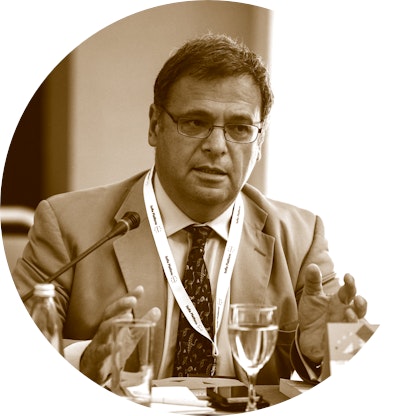EU Green Deal: carbon austerity or economic boost
The European Green Deal, launched in December 2019, is an ambitious policy proposal that will try to agree a carbon emissions reduction target for Europe of up to 55% by 2030 compared to 1990. Two questions appear: is it possible and how much will it cost. But both could be misleading, says Julian Popov, Fellow at the European Climate Foundation and former Bulgarian Minister of the Environment
We have reached a tipping point where zero carbon paths could be equitable, improving quality of life for everyone, and be profitable
Climate policies are often portrayed as austerity measures or insurance premiums that companies or individuals hand over to some alien agent. Climate action premiums are, however, payed into our economies and depending on how we invest this money, we can either lose it, keep it or increase its value. In 2006, when the Stern Review on the Economics of Climate Change was published, the cost of renewables was very high and the austerity and the lost insurance premium paradigm was still somehow justified. Three years later, the COP15 climate conference in Copenhagen tried to emphasise the economic benefits of green business. Many remained sceptical. The widely publicised Greenhouse Gas Abatement Cost Curve to 2030, developed at the time by the consultancy McKinsey, showed a scary picture. It suggested governments would have to spend vast amounts of money on expensive nuclear, much more expensive and still infant wind and solar energy, and even more expensive and commercially untested carbon capture and storage. The European carbon market was making its first and not very promising steps. It appeared we would have to pay a lot to meaningfully reduce the risk of a climate disaster that would devastate our economy in the future. The focus was on richer countries paying the bill for everyone else in terms of financing and by giving up our comfortable lifestyle. The most frequently used word by EU governments and Brussels institutions to describe climate action was “burden”. The most heated policy debate has been about “burden sharing”. The plan looked tough, but necessary. Naturally, many wanted to postpone it or slow it down. In a decade, things have changed. Climate economics have turned upside down. The cheaper (nuclear) became expensive, the expensive became cheap. Scarce became abundant, abundant scarce. The theory we were approaching the end of our economically viable fossil fuel resources has faded away. The European carbon price recovered and carbon emission allowances started turning into a new currency. Centralised energy production became decentralised, while decentralised consumption is becoming connected and aggregated. In 2006, the feed-in tariff for industrial size solar power installations in Germany was around €400 a megawatt hour (MWh). The idea of solar energy in cloudy England was the obligatory conference joke. In 2010, when the UK introduced the first feed-in tariff it was set at £472.50 a kilowatt hour for new build solar photovoltaic. That was around ten times higher than wholesale electricity prices at the time. Now subsidy-free solar power plants are coming online in the UK. Around the world solar contracts for €30/MWh are not that unusual. The picture with onshore and offshore wind is similar, the cost of batteries is going down dramatically and a wide range of energy and carbon saving technologies are moving forward with a speed that governments and regulators find difficult to process. We are witnessing a global low carbon industry race in which Europe might be the best coach, but it is certainly not the best runner. According to an HSBC study published in 2009 at the time of big financial crisis stimulus packages, China spent $221 billion on a green stimulus package followed by the US with $112 billion. The EU spent $54 billion. China spent a large share of this package on electric vehicles, high speed railways and long distance sophisticated grids. Ten years later China is leading the world in most of these technologies. In 2009, US President Obama announced a $2.4 billion package to support the production of electric vehicles. The US spends 2.8% of GDP on research and development and Japan 3.2% against only 2% in the EU. China recently surpassed the EU in R&D spending intensity. It is not surprising that China is ahead in many low carbon industries. Today Europe faces a political choice: which paradigm to apply — that of austerity or that of industrial innovation. Luckily we have reached a tipping point where zero carbon paths could be equitable, improving quality of life for everyone, and be profitable. The European Green Deal offers a unique opportunity for Europe to speed up its economy and at the same time move it onto a sustainable track. Opposition to an ambitious deal might be fierce. Many incumbent industries will oppose change and government treasuries will fear lost tax revenue. Governments must, however, do what governments do not like doing — welcome rapid innovation and encourage risk and disruption.
The views expressed in this opinion are those of the author and do not necessarily reflect the position of FORESIGHT _Climate & Energy_Do you have a thoughtful response to the opinion expressed here? Do you have an opinion regarding an aspect of the global energy transition you would like to share with other FORESIGHT readers? If so, please send a short pitch of 200 words and a sentence explaining why you are the right person to deliver this opinion to opinion@foresightdk.com.
